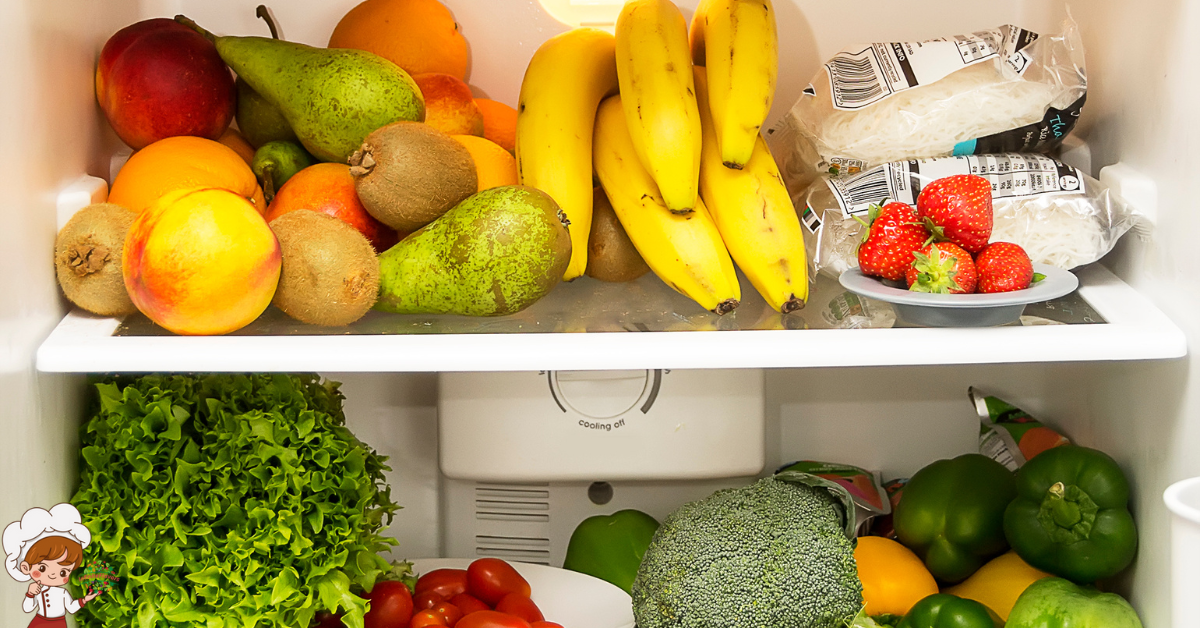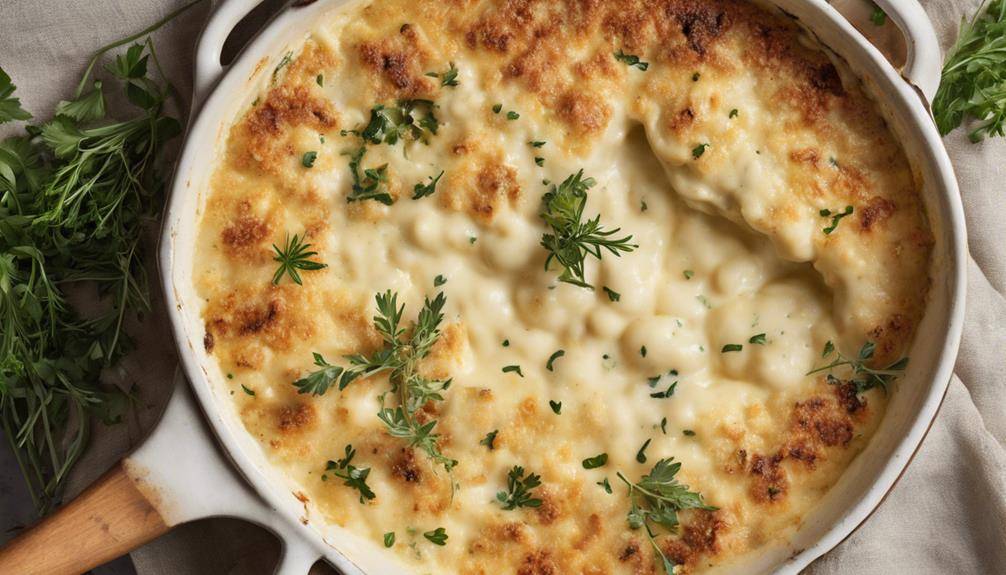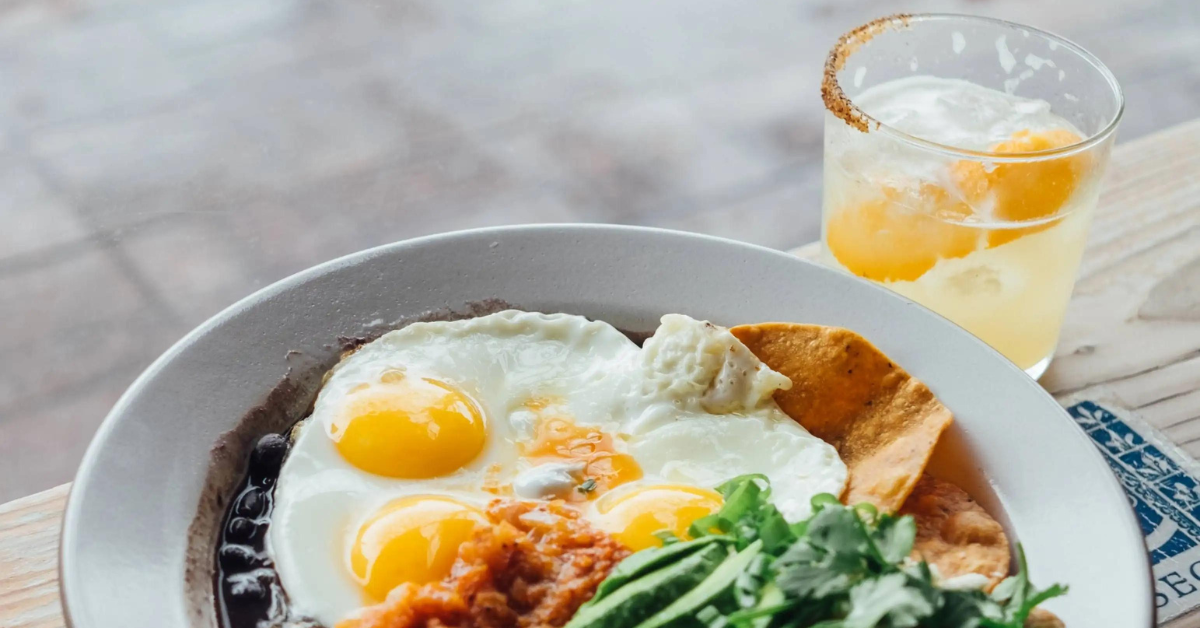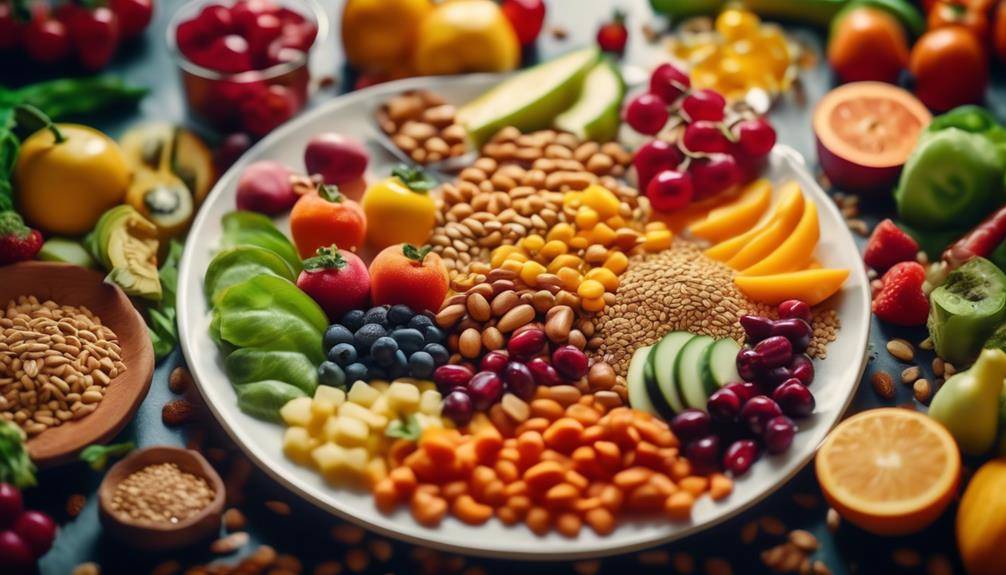Popular Moroccan Dishes For Special Occasions
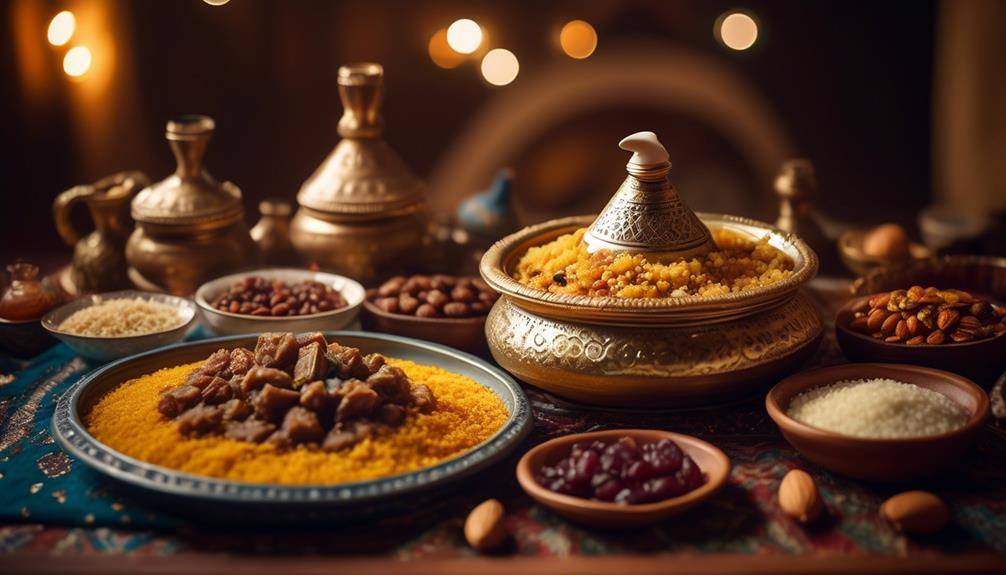
Moroccan Dishes For Special Occasions; Have you ever wondered what makes Moroccan cuisine so alluring and perfect for special occasions? Well, prepare to embark on a culinary journey filled with tantalizing flavors and exotic spices. From traditional tagine recipes that transport you to the heart of Morocco to delectable couscous varieties that are a feast for the senses, Moroccan dishes are a true celebration of food. But that’s not all – there’s a mouthwatering soup, a heavenly pastilla, and even exquisite seafood delights waiting to be discovered.
And let’s not forget the refreshing Moroccan mint tea that complements these dishes perfectly. So, get ready to savor the taste of Morocco as we explore some of the most popular Moroccan dishes for those special moments in life.
Traditional Moroccan Tagine Recipes
If you’re looking to add a touch of exotic flavor to your special occasion, traditional Moroccan tagine recipes are the perfect choice. Tagine is a dish that is deeply rooted in Moroccan culture and has been enjoyed for centuries. The traditional tagine techniques and popular tagine ingredients make it a standout dish that is sure to impress your guests.
Tagine is not just a dish, it is a cooking vessel with a conical-shaped lid that helps to retain moisture and infuse the flavors of the ingredients. The slow-cooking process in the tagine allows the ingredients to marry together and develop a depth of flavor that is simply unmatched. The result is a succulent and tender dish that is bursting with aromatic spices.
Some popular tagine ingredients include chicken, lamb, beef, or even vegetables for a vegetarian option. These proteins are often paired with a variety of fruits like apricots, dates, or prunes, which add a natural sweetness to balance the savory flavors. The spices commonly used in Moroccan cuisine, such as cumin, turmeric, cinnamon, and ginger, bring a warm and earthy element to the dish.
The traditional tagine techniques involve layering the ingredients in the pot, starting with the meat and adding the vegetables and fruits on top. This allows the flavors to meld together as they cook. The slow and low cooking method ensures that the meat becomes tender and the flavors intensify.
Delectable Couscous Varieties
Get ready to tantalize your taste buds with a variety of traditional couscous recipes that will transport you to the heart of Morocco. From rich and flavorful lamb couscous to the vibrant and exotic flavors of seafood couscous, there is something to satisfy every palate. Don’t forget to explore the world of couscous accompaniments, such as tangy harissa sauce and fragrant preserved lemons, to elevate your dining experience to new heights.
Traditional Couscous Recipes
Traditional couscous recipes offer a delightful array of delectable varieties that are sure to elevate any special occasion meal. Whether you’re looking for a flavorful side dish or a refreshing salad, Moroccan cuisine has got you covered. Here are three mouthwatering options to consider:
- Couscous with Roasted Vegetables: This dish combines the nutty flavor of couscous with the caramelized sweetness of roasted vegetables. The combination of tender couscous grains and the vibrant colors of roasted peppers, zucchini, and eggplant will add a burst of flavor to your meal.
- Moroccan Couscous Salad: Bursting with freshness, this salad features fluffy couscous tossed with juicy tomatoes, crisp cucumbers, and aromatic herbs like mint and parsley. The tangy dressing, made with lemon juice and olive oil, perfectly balances the flavors, making it a refreshing accompaniment to any main course.
- Spiced Couscous with Lamb: For a heartier option, try this flavorful couscous dish with tender, slow-cooked lamb. The couscous is infused with aromatic spices like cinnamon, cumin, and turmeric, creating a rich and fragrant base. The succulent pieces of lamb add a savory element that will leave your taste buds longing for more.
Exotic Couscous Flavors
Exquisite couscous varieties from around the world offer a tantalizing blend of flavors and textures that are sure to impress even the most discerning palates. When it comes to exotic couscous flavors, there are endless possibilities to explore. One unique couscous pairing that stands out is the combination of couscous with apricots and almonds. The sweetness of the apricots perfectly complements the nutty flavor of the almonds, creating a delightful contrast in every bite.
Another exotic flavor combination is couscous with pomegranate and pistachios. The juicy burst of pomegranate seeds adds a refreshing element, while the crunch of the pistachios brings a delightful texture. For those who prefer a savory option, couscous with roasted vegetables and feta cheese is a winning choice. The roasted vegetables add depth and richness, while the creamy feta cheese adds a tangy twist. With these unique couscous pairings, you can elevate your special occasions with a touch of exotic flavors that will leave your guests craving for more.
Couscous Accompaniments
When it comes to accompanying your couscous dishes, there is a wide array of delectable varieties to choose from. Traditional couscous accompaniments are an essential part of Moroccan cuisine, adding depth and flavor to the meal. Here are three popular Moroccan side dishes that perfectly complement your couscous:
- Harissa: This spicy chili paste is a staple in Moroccan households. Made with a blend of roasted red peppers, chili peppers, garlic, and spices, it adds a fiery kick to your couscous. The bold flavors of harissa create a harmonious balance with the subtle taste of the couscous.
- Moroccan Salad: A refreshing and vibrant salad made with fresh tomatoes, cucumbers, onions, and herbs, dressed with lemon juice and olive oil. The crispness of the vegetables and the tangy dressing provide a refreshing contrast to the couscous.
- Moroccan Mint Tea: A traditional Moroccan drink, mint tea is served alongside couscous to cleanse the palate. Its soothing taste and aromatic fragrance refreshes and enhances the overall dining experience.
These traditional couscous accompaniments are a testament to the rich flavors and diverse culinary traditions of Morocco. Incorporating these side dishes will elevate your couscous dishes to new heights, providing a memorable dining experience.
Spicy Harira Soup for Starters
When it comes to Moroccan cuisine, the spicy harira soup stands out as a classic starter. Made with traditional ingredients like lentils, chickpeas, and tomatoes, this soup is bursting with flavors that will awaken your taste buds. The cooking methods and techniques used to prepare harira soup are meticulous, ensuring that every ingredient is perfectly cooked and blended together to create a rich and hearty dish. The cultural significance and history of harira soup make it a staple in Moroccan households, as it is often served during Ramadan to break the fast.
Traditional Ingredients Used
To truly experience the rich flavors of Moroccan cuisine, one cannot overlook the traditional ingredients that give dishes like the Spicy Harira Soup their distinct and tantalizing taste. The use of these ingredients is not only essential for cooking techniques, but also holds cultural significance in Moroccan cuisine. Here are three traditional ingredients that bring depth and complexity to Moroccan dishes:
- Ras el Hanout: This fragrant spice blend is a staple in Moroccan cooking. Made from a mixture of various spices like cumin, coriander, ginger, and cinnamon, it adds a warm and aromatic flavor to dishes like the Spicy Harira Soup.
- Preserved Lemon: This tangy ingredient is a key element in Moroccan cuisine. The lemons are pickled in salt and lemon juice, creating a unique and intense citrus flavor that adds brightness to dishes like tagines and couscous.
- Saffron: Known as the “red gold,” saffron is treasured for its vibrant color and distinct flavor. It is used sparingly in Moroccan dishes, adding a luxurious and earthy taste that elevates dishes to another level.
These traditional ingredients are what make Moroccan cuisine so special and worth savoring.
Cooking Methods and Techniques
Now that we have explored the traditional ingredients that add depth and complexity to Moroccan dishes, let’s dive into the cooking methods and techniques that make the Spicy Harira Soup a delectable starter for any special occasion. The cooking techniques used in preparing this soup are what truly sets it apart. It involves slowly simmering a combination of unique ingredients, such as lentils, chickpeas, tomatoes, and a blend of aromatic spices, including cumin, ginger, and turmeric.
This slow cooking process allows the flavors to meld together, creating a rich and hearty soup with layers of complexity. The result is a bowl of warm and comforting goodness that is both satisfying and deeply flavorful. The use of these cooking techniques truly highlights the unique ingredients and elevates the Spicy Harira Soup to a level that is perfect for special occasions.
Cultural Significance and History
The Spicy Harira Soup for starters holds immense cultural significance in Moroccan cuisine, showcasing the rich history and culinary traditions of the region. This traditional soup is not just a dish; it is a symbol of Moroccan cultural traditions and regional influences. Here’s why Spicy Harira Soup continues to captivate the hearts and palates of Moroccans:
- Nourishing the Soul: Harira Soup is a staple during Ramadan, the holy month of fasting for Muslims. It provides sustenance and comfort to those breaking their fast, symbolizing the communal spirit and devotion of Moroccan society.
- Historical Roots: With its origins dating back centuries, Harira Soup represents the amalgamation of Moroccan history, blending Berber, Arab, and Andalusian culinary influences. It is a testament to the diverse cultural heritage that has shaped Moroccan cuisine.
- Flavorful Complexity: The combination of aromatic spices, tender meat, and hearty legumes in Harira Soup reflects the intricate layers of Moroccan flavors. Each spoonful carries the essence of the country’s vibrant culinary tapestry.
Through its cultural traditions and regional influences, the Spicy Harira Soup serves as a reminder of Morocco’s rich history and culinary legacy.
Mouthwatering Moroccan Pastilla
Indulge in the tantalizing flavors and exquisite layers of the mouthwatering Moroccan Pastilla. This traditional Moroccan dish is a true culinary masterpiece that will transport your taste buds to the vibrant streets of Morocco. The preparation techniques of Moroccan pastilla have been passed down through generations, ensuring that every bite is filled with authenticity and tradition.
To create this delectable dish, the first step is to prepare the thin layers of delicate pastry. The dough is stretched and rolled until it becomes paper-thin, resulting in a light and crispy texture. This technique requires skill and patience, as the pastry must be handled with care to avoid tearing.
The filling of Moroccan pastilla is what truly sets it apart. While traditionally made with pigeon meat, modern variations offer a wide range of unique filling options. From succulent chicken and fragrant spices to tender seafood and aromatic vegetables, there is a filling to suit every palate. The ingredients are cooked together with a harmonious blend of Moroccan spices, such as cinnamon, ginger, and saffron, creating a symphony of flavors that dance on your tongue.
Once the pastry is layered with the filling, it is baked until golden brown and crispy. The final touch is a generous dusting of powdered sugar and cinnamon, adding a hint of sweetness to balance the savory flavors.
Moroccan pastilla is a dish that celebrates the rich culinary heritage of Morocco. With its intricate preparation techniques and unique filling options, it is a true feast for the senses. So, go ahead and treat yourself to the mouthwatering Moroccan Pastilla – you won’t be disappointed.
Exquisite Moroccan Seafood Delights
Transport your taste buds from the delectable Moroccan Pastilla to a world of exquisite seafood delights that will leave you craving for more. Moroccan cuisine is known for its rich flavors and unique combinations of spices, and when it comes to seafood, the culinary traditions are no different. Whether you’re a seafood lover or just looking to expand your palate, these Moroccan seafood recipes and cooking techniques are sure to impress.
- Grilled Octopus: Picture succulent octopus tentacles, marinated in a blend of spices and grilled to perfection. The smoky char and tender flesh create a harmonious contrast that will transport you to the bustling streets of Marrakech. The secret to achieving the perfect texture lies in the cooking technique – slow and low. This allows the octopus to become tender while retaining its natural flavors.
- Chermoula Sea Bass: Chermoula is a traditional Moroccan marinade made from a combination of fresh herbs, spices, garlic, and lemon juice. When slathered on a fresh sea bass fillet and baked to flaky perfection, it creates a burst of flavors that is both tangy and aromatic. The technique of baking in a sealed parchment paper packet ensures that the fish remains moist and tender, allowing the chermoula flavors to infuse every bite.
- Moroccan Seafood Tagine: A classic Moroccan dish, the seafood tagine is a medley of shrimp, fish, and mussels cooked in a rich tomato-based sauce. The slow-cooking technique in a traditional clay tagine pot allows the flavors to meld together, resulting in a dish that is both hearty and comforting. The addition of fragrant spices like cumin, paprika, and saffron elevates the dish to a whole new level of deliciousness.
These Moroccan seafood delights are a testament to the country’s culinary prowess. So, why not embark on a gastronomic adventure and try your hand at these mouthwatering recipes? Your taste buds will thank you.
Flavorful Moroccan Meatball Dishes
For a culinary experience that will tantalize your taste buds, explore the world of flavorful Moroccan meatball dishes. Moroccan cuisine is known for its bold and aromatic flavors, and meatballs are no exception. These savory delights are packed with spices and seasonings that will transport you to the vibrant streets of Morocco.
One of the key elements in Moroccan meatball dishes is the unique blend of spices used to season the meat. Traditional seasonings include cumin, coriander, paprika, and cinnamon. These spices create a rich and complex flavor profile that is both comforting and exotic. The meatballs are typically made with a combination of ground beef or lamb, breadcrumbs, eggs, and the aromatic spices. The mixture is then shaped into small balls and cooked to perfection.
When it comes to presentation, Moroccan meatball dishes offer a variety of options to impress your guests. One popular way to serve them is with a side of couscous or rice. The fluffy texture of the grains complements the savory meatballs beautifully. Another option is to serve them with a tangy tomato sauce or a creamy yogurt sauce. The contrasting flavors add depth to the dish and enhance the overall experience.
To add a touch of elegance to your meatball dish, consider garnishing it with fresh herbs like mint or cilantro. These herbs not only add a pop of color but also a refreshing aroma that complements the spices in the meatballs. For an extra burst of flavor, you can also top the dish with a squeeze of lemon or a sprinkle of toasted almonds.
Savory Moroccan Chicken Tagines
When it comes to savory Moroccan chicken tagines, you can expect a burst of traditional flavors that will transport your taste buds to the vibrant streets of Morocco. The cooking techniques used in these dishes are designed to bring out the best flavors of the chicken, resulting in tender and succulent meat. From the aromatic spices to the slow cooking process, every step is carefully executed to create a truly memorable dining experience.
Traditional Tagine Flavors
To truly experience the flavorful essence of Moroccan cuisine, you cannot overlook the tantalizing combination of spices and ingredients found in traditional tagine dishes, particularly the savory Moroccan chicken tagines. These dishes are a true masterpiece of Moroccan cooking, crafted with precision and attention to detail. The traditional tagine cooking techniques used to prepare these dishes have been passed down through generations, adding to their cultural significance.
The flavors of a savory Moroccan chicken tagine are simply unparalleled. The tender chicken is marinated in a blend of aromatic spices, such as cumin, coriander, and cinnamon, which infuse the meat with a rich and complex flavor. The addition of preserved lemons and olives adds a tangy and briny element that perfectly balances the dish. Each bite is a symphony of flavors that will transport you to the vibrant streets of Morocco.
Cooking Techniques and Tips
Mastering the cooking techniques and tips for savory Moroccan chicken tagines will elevate your culinary skills and allow you to create a dish that is bursting with tantalizing flavors. When it comes to cooking tagines, it’s crucial to understand the importance of slow cooking. This traditional Moroccan cooking technique ensures that the chicken is tender and infused with the rich flavors of the spices and seasonings. To achieve this, it’s recommended to use a tagine cooking vessel that allows for even heat distribution.
Additionally, using Moroccan seasoning blends, such as ras el hanout or baharat, adds depth and complexity to the dish. These blends typically include a mix of aromatic spices like cumin, coriander, cinnamon, and paprika. Don’t be afraid to experiment with different spice combinations to find your perfect balance of flavors. Remember, cooking tagines is an art that requires patience and attention to detail, but the end result is well worth the effort.
Popular Variations and Adaptations
For a unique twist on traditional Moroccan chicken tagines, consider exploring popular variations and adaptations that will take your culinary skills to the next level. Moroccan cuisine has a rich history of incorporating flavors and techniques from various cultures, resulting in popular fusion dishes that offer modern twists on traditional recipes. Here are three exciting ways to elevate your Moroccan chicken tagine:
- Mediterranean Influence: Infuse your tagine with the vibrant flavors of the Mediterranean by adding ingredients like olives, capers, and sun-dried tomatoes. This fusion creates a zesty and tangy profile that will tantalize your taste buds.
- Spices from Around the World: Experiment with spices from different regions to create a truly unique flavor profile. Try adding a touch of Indian curry powder or Mexican chipotle for a delightful fusion of tastes.
- Sweet and Savory Combination: Moroccan cuisine is known for its harmonious blend of sweet and savory flavors. Explore the combination of dried fruits such as apricots, prunes, and dates with the aromatic spices in your tagine for a delightful balance of tastes.
Scrumptious Moroccan Lamb Specialties
Indulge in the tantalizing flavors and succulent textures of Moroccan lamb specialties that are sure to delight your taste buds on any special occasion. Moroccan cuisine is known for its rich and diverse flavors, and when it comes to lamb, the options are endless. The cooking techniques used in preparing these dishes are not only exquisite but also hold cultural significance.
One popular Moroccan lamb specialty is the tagine. This slow-cooked stew is made by simmering tender pieces of lamb with aromatic spices, such as cinnamon, cumin, and turmeric. The tagine gets its name from the traditional clay pot in which it is cooked, which helps to infuse the flavors and create a tender and moist meat. The slow simmering process allows the lamb to absorb all the flavors, resulting in a melt-in-your-mouth experience.
Another beloved Moroccan lamb dish is the mechoui. This dish showcases the skill and expertise of Moroccan chefs, as it involves roasting a whole lamb over an open fire. The lamb is seasoned with a blend of spices, including garlic, paprika, and cumin, which creates a flavorful crust on the outside while keeping the meat juicy and tender on the inside. The mechoui is often reserved for special occasions and celebrations, as it requires time and effort to prepare, but the end result is always worth it.
Moroccan lamb specialties not only satisfy your taste buds but also offer a glimpse into the rich cultural heritage of Morocco. The cooking techniques and spices used in these dishes have been passed down through generations, and their flavors evoke a sense of tradition and history. So, next time you’re looking to make a special occasion truly memorable, consider indulging in the scrumptious Moroccan lamb specialties that will leave you craving for more.
Tasty Moroccan Vegetable Stews
When it comes to Moroccan vegetable stews, the traditional Moroccan spices are what make them truly exceptional. The combination of cumin, turmeric, paprika, and cinnamon adds a rich and aromatic flavor to the dish. Additionally, the variety of Moroccan vegetables used, such as eggplant, zucchini, and carrots, provides a delightful mix of textures and colors. These stews are not only delicious, but also a great way to incorporate more vegetables into your diet.
Traditional Moroccan Spices
Traditional Moroccan spices add a burst of flavor and depth to the tantalizing vegetable stews that are a staple in Moroccan cuisine. These aromatic spices are the heart and soul of Moroccan cooking, elevating every dish to a whole new level of deliciousness. Here are three reasons why traditional Moroccan spices are truly exceptional:
- Rich in flavor: The combination of spices like cumin, paprika, turmeric, and cinnamon creates a symphony of tastes that dance on your palate. Each spice brings its unique profile, adding warmth, earthiness, and a hint of sweetness to the dish.
- Health benefits: Apart from their incredible taste, Moroccan spices are packed with health benefits. Cumin, for example, aids digestion, while turmeric has anti-inflammatory properties. These spices not only make your food taste great but also contribute to your overall well-being.
- Cultural significance: Traditional Moroccan spices are deeply rooted in Moroccan culture and history. They have been used for centuries, passed down from generation to generation. Incorporating these spices in your cooking not only brings authenticity but also celebrates the rich culinary heritage of Morocco.
Varieties of Moroccan Vegetables
One cannot resist the mouthwatering allure of Moroccan vegetable stews, bursting with a medley of vibrant flavors and tender textures. Moroccan cuisine is known for its rich and complex flavors, and the vegetable stews are no exception. One popular dish is the Moroccan vegetable tagine, a slow-cooked stew that combines a variety of vegetables like carrots, potatoes, and zucchini with aromatic spices like cumin, turmeric, and cinnamon. The result is a hearty and satisfying dish that is perfect for special occasions.
Another delicious option is Moroccan vegetable couscous, where the vegetables are cooked separately and then served over a bed of fluffy couscous. This dish offers a delightful combination of textures and flavors, making it a favorite among both vegetarians and meat lovers alike. Whether you choose the tagine or the couscous, these Moroccan vegetable stews are sure to impress your guests with their incredible taste and presentation.
Heavenly Moroccan Sweets and Desserts
Are you ready to indulge in the delectable world of Moroccan sweets and desserts that will leave you craving for more? Moroccan cuisine is known for its rich flavors and unique combinations of ingredients, and the realm of Moroccan sweets is no exception. Get ready to satisfy your sweet tooth with these heavenly Moroccan sweets and desserts:
- Moroccan Sweets: From the famous Moroccan almond cookies, known as “Ghriba,” to the delightful honey-drenched pastries like “Chebakia,” Moroccan sweets are a treat for your taste buds. These delicate and aromatic treats are often made with a blend of spices such as cinnamon, cardamom, and orange blossom water, creating a symphony of flavors that will transport you to the bustling streets of Marrakech.
- Mouthwatering Moroccan Pastries: Moroccan pastries are a true work of art, with their intricate designs and exquisite flavors. One such pastry is the “M’hancha,” a coiled pastry filled with almonds, cinnamon, and orange blossom water. Another popular choice is the “Briouat,” a crispy phyllo dough triangle filled with a savory or sweet filling, such as spiced minced meat or almond paste.
- Delightful Desserts: Moroccan desserts are the perfect ending to any meal. The “Makroud” is a sweet and sticky pastry made with semolina, dates, and a hint of orange blossom water. For a refreshing treat, try the “Zaalouk,” a chilled dessert made with roasted eggplants, sugar, and cinnamon, topped with a dollop of creamy yogurt.
Moroccan sweets and desserts are a true celebration of flavors, textures, and aromas. Whether you have a sweet tooth or simply appreciate the artistry of pastry-making, these heavenly Moroccan treats will leave you wanting more. So, go ahead and indulge in the sweet side of Moroccan cuisine.
Refreshing Moroccan Mint Tea
Indulge in the refreshing delight of Moroccan Mint Tea, an invigorating blend of fragrant mint leaves, bold green tea, and a touch of sweetness that will transport you to the vibrant streets of Morocco. Moroccan Mint Tea, also known as “Atay nana,” holds a special place in Moroccan culture and is an integral part of traditional tea ceremonies. The preparation and serving of this tea are steeped in tradition and etiquette, making it a cherished beverage for special occasions.
The health benefits of Moroccan Mint Tea are numerous and impressive. Mint leaves, the star ingredient of this tea, are known for their soothing and calming properties. The menthol present in mint leaves can help relieve indigestion, promote digestion, and alleviate symptoms of nausea. Additionally, mint tea is believed to aid in weight loss by boosting metabolism and reducing appetite. Its antioxidant properties can also help combat free radicals, reduce inflammation, and strengthen the immune system.
The invigorating combination of mint leaves and green tea brings together the best of both worlds. Green tea is rich in antioxidants and has been associated with numerous health benefits, including improved brain function, increased fat burning, and reduced risk of chronic diseases such as heart disease and type 2 diabetes. When combined with the refreshing taste and aroma of mint leaves, Moroccan Mint Tea becomes a delightful and healthy beverage.
Whether you’re sipping on Moroccan Mint Tea during a traditional tea ceremony or simply enjoying a cup at home, the experience is sure to be a treat for your senses. The fragrant mint leaves, the boldness of the green tea, and the touch of sweetness create a harmonious blend that will leave you feeling refreshed and rejuvenated. So why not indulge in the Moroccan Mint Tea experience and reap the many health benefits it has to offer?
Authentic Moroccan Bread Recipes
Immerse yourself in the rich culinary heritage of Morocco by exploring the realm of authentic Moroccan bread recipes, where the art of bread-making is elevated to a level of perfection that will leave you craving for more. In Morocco, bread is a staple food and an integral part of every meal. The country’s unique bread baking techniques and traditional bread ovens contribute to the exceptional taste and texture of Moroccan bread.
- Intense Aromas: When you enter a traditional Moroccan bakery, the first thing that hits you is the intoxicating aroma of freshly baked bread. The combination of fragrant spices, such as anise and sesame seeds, creates a sensory experience that is simply irresistible.
- Satisfying Crunch: Moroccan bread, known as khobz, is characterized by its thin, crispy crust. The secret lies in the use of traditional bread ovens, which are made of clay and heated with wood fire. This baking method creates a crust that is golden brown and delightfully crunchy, while the inside remains soft and fluffy.
- Versatile Varieties: Moroccan bread comes in various shapes and sizes, each with its own unique qualities. From the round and flat khobz to the elongated batbout and the semolina-based harcha, there is a bread for every occasion. Whether you are serving it with tagines, using it as a vessel for sandwiches, or simply enjoying it on its own, Moroccan bread adds a distinct flavor and texture to any meal.
To truly experience the magic of Moroccan cuisine, you must indulge in the pleasure of baking and savoring authentic Moroccan bread. The combination of traditional bread baking techniques and the use of traditional bread ovens creates a culinary masterpiece that is sure to transport you to the vibrant streets of Morocco. So, roll up your sleeves, gather your ingredients, and embark on a bread-making adventure that will not only satisfy your hunger but also awaken your senses.
Exotic Moroccan Salad Combinations
When exploring the diverse flavors of Moroccan cuisine, you can elevate your dining experience with the exotic combinations of Moroccan salads. These salads are not your ordinary side dishes; they are packed with vibrant flavors, unique ingredients, and exotic salad dressings that will tantalize your taste buds.
One of the most intriguing aspects of Moroccan salads is the variety of exotic salad dressings that are used. From the zesty lemon and olive oil dressing to the tangy yogurt and herb dressing, each salad dressing adds a burst of flavor to the fresh vegetables. The combination of spices and herbs, such as cumin, coriander, and mint, in these dressings creates a unique and aromatic experience that will leave you craving for more.
Moreover, Moroccan salads are not just about the taste; they also focus on the presentation. The Moroccans have mastered the art of creating visually appealing salads that are a feast for the eyes. They use a combination of colors, textures, and shapes to create a stunning salad presentation. For example, they may arrange a mix of chopped tomatoes, cucumbers, and onions in a colorful mosaic pattern, or they may create a tower of layered vegetables for a dramatic effect. These unique salad presentation ideas not only make the salads look beautiful but also enhance the overall dining experience.
Irresistible Moroccan Appetizers
To truly appreciate the rich flavors of Moroccan cuisine, one must first experience the irresistible Moroccan appetizers that are sure to captivate your taste buds. These mouthwatering delicacies are the perfect way to start any meal, and they showcase the unique and vibrant flavors that Moroccan cuisine is known for. From irresistible Moroccan dips to unique Moroccan finger foods, these appetizers are a culinary delight that will leave you craving for more.
- Irresistible Moroccan Dips: Moroccan cuisine is famous for its array of flavorful dips that are perfect for scooping up with warm, freshly baked bread. One such dip is the creamy and tangy Moroccan hummus, made with chickpeas, tahini, garlic, lemon juice, and olive oil. The combination of these ingredients creates a rich and velvety texture that is simply irresistible. Another popular dip is the Moroccan baba ganoush, made with roasted eggplant, garlic, tahini, lemon juice, and spices. The smoky and earthy flavors of the roasted eggplant combined with the nutty tahini and zesty lemon create a dip that is both unique and incredibly delicious.
- Unique Moroccan Finger Foods: Moroccan cuisine offers a wide variety of finger foods that are perfect for snacking or as appetizers at parties. One such finger food is the Moroccan stuffed dates, where sweet dates are stuffed with a mixture of nuts, spices, and honey. The combination of sweetness from the dates and the savory flavors from the stuffing creates a delightful burst of flavors in every bite. Another unique Moroccan finger food is the Moroccan meatballs, also known as kefta. These meatballs are made with ground beef or lamb, mixed with a blend of spices such as cumin, paprika, and cinnamon. They are then grilled or baked to perfection, creating a juicy and flavorful bite-sized treat.
- Aromatic Moroccan Pastries: Moroccan pastries are a true delight, filled with fragrant spices and sweet fillings. One popular pastry is the Moroccan chicken pastilla, a savory-sweet treat made with layers of delicate phyllo dough filled with shredded chicken, almonds, spices, and a hint of cinnamon. The combination of the tender chicken, crunchy almonds, and aromatic spices creates a pastry that is both savory and sweet, with a perfect balance of flavors. Another aromatic Moroccan pastry is the Moroccan almond briouats, which are small triangular pastries filled with a sweet almond paste and flavored with orange blossom water. The crispy outer shell paired with the sweet almond filling creates a heavenly bite that is simply irresistible.
Moroccan Dishes For Special Occasions; Frequently Asked Questions
What Are the Key Ingredients in Traditional Moroccan Tagine Recipes?
In traditional Moroccan tagine recipes, the key ingredients are typically a combination of spices like cumin, coriander, and turmeric, along with meat or vegetables. For a vegetarian option, popular choices include chickpeas or lentils for flavorful Moroccan meatball dishes.
How Long Does It Take to Cook a Mouthwatering Moroccan Pastilla?
To cook a mouthwatering Moroccan pastilla, it typically takes around 2 hours. However, there are alternative recipes that can be prepared in less time. To achieve the perfect crust, make sure to follow these tips.
Can You Recommend Any Vegetarian Options for Flavorful Moroccan Meatball Dishes?
You can try using vegetarian meatball substitutes like chickpeas or lentils to create flavorful Moroccan meatball dishes. Get creative by incorporating traditional spices and herbs for a delicious twist on classic Moroccan cuisine.
What Spices Are Typically Used in Savory Moroccan Chicken Tagines?
When it comes to Moroccan chicken tagines, there are various flavorful variations to try. The key spices typically used are cumin, coriander, turmeric, ginger, and cinnamon. These spices not only enhance the taste but also offer health benefits.
How Is Authentic Moroccan Bread Different From Regular Bread?
Authentic Moroccan bread recipes are distinct from regular bread in several ways. The use of semolina flour gives it a unique texture, while the addition of spices like anise and sesame seeds adds a delicious flavor. This sets it apart from regular bread.
Conclusion
In conclusion, Moroccan cuisine offers a delightful array of dishes that are perfect for special occasions. From the rich and aromatic tagines to the flavorful couscous varieties, every bite is a burst of exotic flavors. The spicy harira soup is a perfect starter, while the succulent pastilla and seafood delights will leave you craving for more. Don’t forget to indulge in the refreshing Moroccan mint tea and savor the authentic bread recipes. With these irresistible dishes, your special occasion will be a memorable culinary experience.




